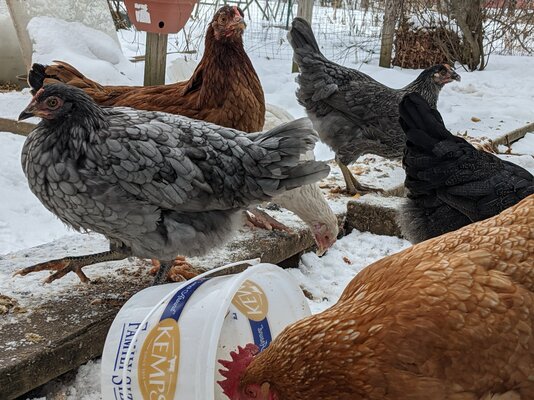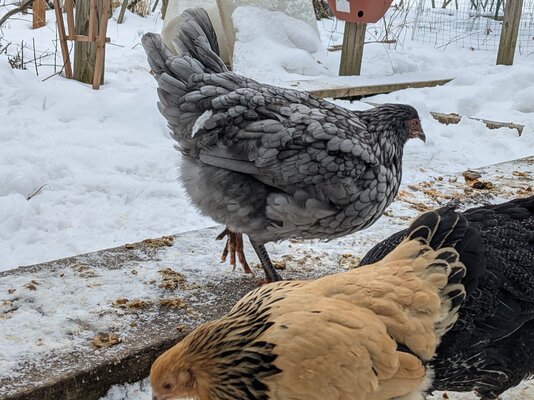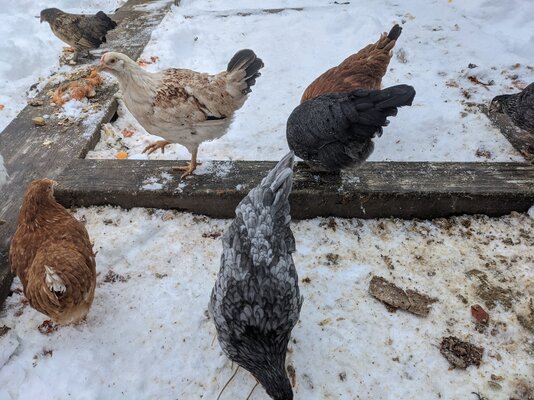What is going on with this lady's genetics that her body looks blue with darker feathers/areas? Is it normal for blues to be so irregularly colored? If so, is this a modifying gene, or something she'll grow out of like the occasional white feather in some blacks? I understand that dark edging on blues indicates they carry the pattern gene, but that doesn't seem to explain the dark splotches.
She's a sunnyside rainbow egger, so limited clues there, going on 5 months. In her same batch I did get black, splash, and white laced gray (she looks decidedly blue compared to the gray), along with lots of red based ones (some in background of photos).
She's a sunnyside rainbow egger, so limited clues there, going on 5 months. In her same batch I did get black, splash, and white laced gray (she looks decidedly blue compared to the gray), along with lots of red based ones (some in background of photos).







 Whatever she is, she is very pretty.
Whatever she is, she is very pretty.